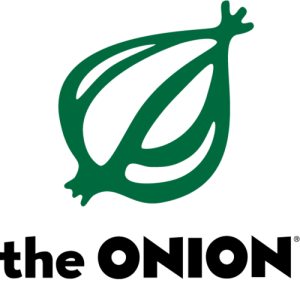The career of Frank Mauran, owner of small Gaspee Publishing in Providence, R.I., is a parable of publishing’s hard times.
 In the 1990s, he started up the Printing Equipment Guide, a biweekly publication for the publishing trade. “It’s been a hard slog,” Mauran said. “It’s a trade publication for what’s a shrinking industry.” How hard he won’t say, but there’s no guarantee the magazine will be around forever.
In the 1990s, he started up the Printing Equipment Guide, a biweekly publication for the publishing trade. “It’s been a hard slog,” Mauran said. “It’s a trade publication for what’s a shrinking industry.” How hard he won’t say, but there’s no guarantee the magazine will be around forever.
He attended a publishing conference in April, looking for a new idea, and caught a presentation by the CEO of America’s Finest News Source. “The Onion was delivering their content on a bunch of platforms,” Mauran recalled, including video, audio, social media, and cable television. “They said that they have print, as well. I was there with a fellow employee who’s been working with me for a long time on this other publication, and, you know, our ears perked up. There was nothing going on in Providence, and I thought, hey, I kind of know how to do that.”
Today, when the first issue hits the streets, Gaspee Publishing becomes the newest local franchisee of The Onion. Here’s the deal: Mauran’s company assumes all costs of printing and distributing the paper in Rhode Island and neighboring Bristol County, Mass., sells its own ads, and gets to keep the profits. The Onion retains total creative control of the content, including The A.V. Club, its for-realsies entertainment section.
I asked Mauran why he would start printing a newspaper now, in 2011, when he has a front-row seat on the industry’s free fall. It almost sounds like a premise for an Onion story.
“I think I can do better with this than with the publication that I have. The way the numbers work is a lot better,” he told me. “I don’t have any postage costs, and I can get much better ad rates. I’m hoping — at least I think I can get better ad rates. And I have a lot more potential advertisers,” he said. Gaspee can also sell local ads on The Onion’s website, which are displayed to people who live in the market.
 “It’s very popular, I think, with young people in colleges, especially in this state, in this area,” he said. (Mauran consulted with his college-age children, he said.) “Plus, I don’t have to pay for a reporter or a newsroom. I pay a fee for The Onion, but it’s not an overwhelming one,” he said.
“It’s very popular, I think, with young people in colleges, especially in this state, in this area,” he said. (Mauran consulted with his college-age children, he said.) “Plus, I don’t have to pay for a reporter or a newsroom. I pay a fee for The Onion, but it’s not an overwhelming one,” he said.
The Onion is now in 16 markets, more than doubling the number of print editions from this time last year, said Carrie Palmer, the paper’s director of franchising. She said there is still a strong demand for the print product (“like dialup, only slower”).
“That said, print media is not an easy business. It presents its own set of challenges and taking that on is not for everyone,” Palmer said. “The Onion thrives in communities with a young, smart, educated, and affluent population that also have a strong, local client base to support the publication. Print ads in the Onion are still great way for smaller, local businesses to gain exposure among a top-notch readership.”
The Onion started downsizing its print business a year ago, two decades after its first run at the University of Wisconsin, Madison — not by stopping the presses, but by franchising out the job. The move allows the company to focus on creating content without losing its physical footprint. And it’s appealing to publishers trying to sell ads, because The Onion already enjoys widespread brand recognition and virtually no competition.
All but two of the U.S. and Canadian print editions are local franchises; The Onion still operates directly in Milwaukee and New York.
H. Cuthbert Zweibel, The Onion’s ornery vice president of client relations, was not immediately available for comment.